Skills & Techniques
Leaving No Trace in the Boundary Waters Canoe Area Wilderness

Brice
-
September 8, 2018
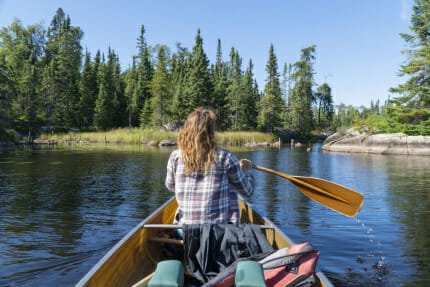
Duluth, MN: Like many outdoor enthusiasts, we have been itching to get to the Boundary Waters for years. Lucky for us, our path as Traveling Trainers allowed us to spend four days paddling through this unique wilderness area.
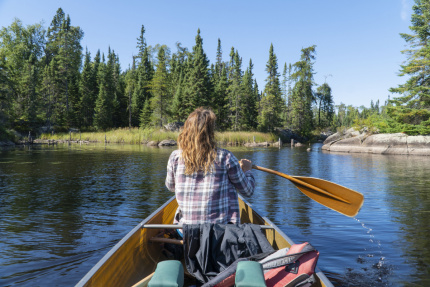
With around 250,000 visitors annually, the Boundary Waters Canoe Wilderness Area is one of the most visited wildernesses in the country. Visitors to the Boundary Waters portage and paddle their way through 1.1 million acres and over 1,000 lakes.
The Boundary Waters is a place that preserves the wilderness spirit and experience for all to enjoy, and it does so by putting Leave No Trace principles into action.
1. Plan Ahead and Prepare
All overnight visitors to the Boundary Waters must obtain a wilderness permit. These permits are given out based on the entry point into the wilderness. There are a limited number given per each day for each entry point, ensuring that all those who come can experience and enjoy solitude. In addition, visitors watch a Leave No Trace video with relevant area information prior to receiving their permit.
2. Travel and Camp on Durable Surfaces
Camping is only allowed at designated campsites. These are scattered throughout the wilderness area with over 2,000 individual campsites! Visitors must find an unoccupied site to stay for the night, as no sites are reservable. While portaging between waterways, visitors stick to establish portage trails.
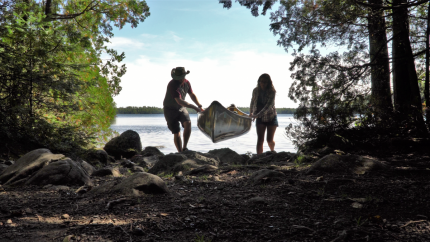
3. Dispose of Waste Properly
All trash must be packed out of the Boundary Waters. Upon receiving a backcountry permit, visitors are required to watch a Leave No Trace video, teaching the seven principles and discussing proper methods for disposing of all types of waste. For human waste, most campsites have a latrine, and catholes are the preferred method when latrines are not available.
4. Leave What You Find
To preserve the ecological diversity of the Boundary Waters, visitors should always clean drain and dry their boats, and clean their camping, fishing, and hiking gear to avoid transporting invasive species. Many of the sites within the Boundary Waters have been used by native people for thousands of years. We were told that our particular campsite had been there for 8,000 years! Because of this, visitors may find historic and culturally significant objects and marking. These should be left alone so other visitors can enjoy them and they can continue to tell this area’s story for years to come.
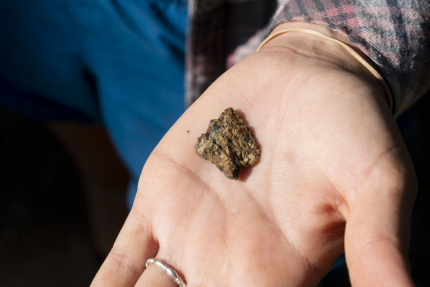
5. Minimize Campfire Impacts
Each campsite in the Boundary Waters has a fire pit, but the key to responsible fires here is responsible wood gathering. Use only dead, down, and dry wood that is no larger than your forearm and can be broken easily. Searching for wood in a larger area will also help keep campsite from being picked clean. While having a fire, keep an eye on it at all times and drown it completely before going to bed or leaving.
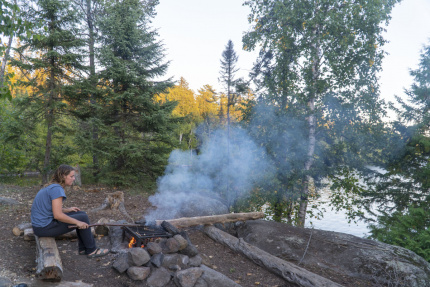
6. Respect Wildlife
Wildlife is all around the Boundary Waters and proper food storage is crucial. Bear hangs will work here, but food must be at least 12 feet high and 6 feet away from any tree. The Forest Service recommends certain types of bear hangs such as the clothesline or single tree with pulley method. Bear canisters can also be used. Trash, toiletries, and any food waste also needs to be stored. All wildlife should be given space to avoid disturbing them.
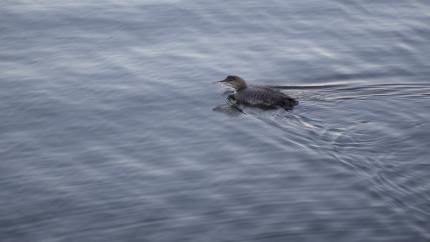
7. Be Considerate of Other Visitors
Many visitors come to the Boundary Waters to experience solitude. Luckily, this is preserved by only allowing nine people or four boats to be gathered at any given time. This includes in campsites and portage areas. While this rule might be frustrating to some, keep in mind that it is there to help preserve the wilderness experience. Keeping noise to a minimum and communicating with other boats and visitors regarding campsites and movements increases everyone’s experience.
Our trip to the Boundary Waters was an experience that will remain with us, and one that we hope others are able to replicate and enjoy well into the future. By practicing Leave No Trace there and in other outdoor spaces, we can all do our part to keep nature a little more wild.
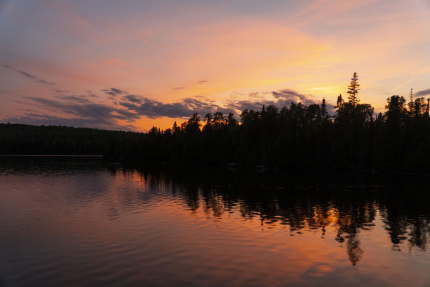
Enjoy your world!
Leave No Trace’s Erin Collier and Brice Esplin are part of the 2018 Subaru/Leave No Trace Traveling Trainer Program that provides free, mobile education to communities across the country. Proud partners of this program include Subaru of America, REI, Eagles Nest Outfitters, Deuter, Thule, Taxa and Klean Kanteen.
Let’s protect and enjoy our natural world together
Get the latest in Leave No Trace eNews in your inbox so you can stay informed and involved.
